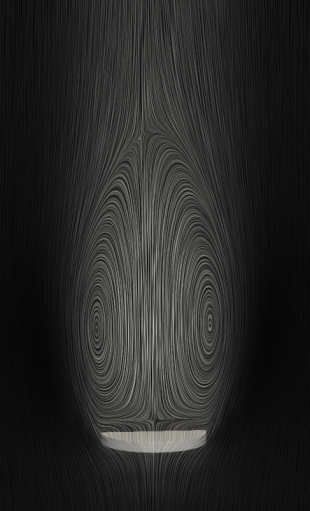Aerodynamics and Hydrodynamics
Our research in fluid mechanics focuses on aerodynamics and hydrodynamics and includes applications such as wind and tidal turbines; wave energy converters and new-concept energy harvesters; aerial and underwater unmanned vehicles for environmental monitoring, inspection, and maintenance.
Our work spans from fundamental research on the physics of fluids, to applied research in close collaboration with industry. For example, we undertake fundamental research on how solid bodies settle in a quiescent or turbulent flow due to gravity (see figure on the right), and we exploit this knowledge to develop new aerial systems that are passively transported by the wind to monitor the environment. We investigate the interaction between a fluid current and free-surface waves, and we collaborate with industry to efficiently harvest the energy both in the tidal stream and in the waves.
To develop new technology, we often find inspiration from nature, where natural evolution has led to optimal solutions for complex problems. For example, natural flyers exploit fluid vortices to fly stably and efficiently in the turbulent wind. In contrast, vortices formed by wind and tidal turbine blades lead to undesirable load fluctuations. Understanding how natural flyers morph their wing while flying allows us to develop more resilient and efficient wind and tidal turbines.
Our main facilities include the FloWave Ocean Energy Research Facility, the Curved Wave Tank, three wave and current water tunnels, and three vertical wind tunnels for insect-scale aerial platforms.
Theme leader: Prof. Ignazio Maria Viola



